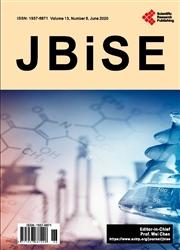The Use of Artificial Intelligence on Segmental Volumes, Constructed from MRI and CT Images, in the Diagnosis and Staging of Cervical Cancers and Thyroid Cancers: A Study Protocol for a Randomized Controlled Trial
引用次数: 4
Abstract
Rationale and Objectives: Accurately establishing the diagnosis and staging of cervical and thyroid cancers is essential in medical practice in determining tumor extension and dissemination and involves the most accurate and effective therapeutic approach. For accurate diagnosis and staging of cervical and thyroid cancers, we aim to create a diagnostic method, optimized by the algorithms of artificial intelligence and validated by achieving accurate and favorable results by conducting a clinical trial, during which we will use the diagnostic method optimized by artificial intelligence (AI) algorithms, to avoid errors, to increase the understanding on interpretation computer tomography (CT) scan, magnetic resonance imaging (MRI) of the doctor and improve therapeutic planning. Materials and Methods: The optimization of the computer assisted diagnosis (CAD) method will consist in the development and formation of artificial intelligence models, using algorithms and tools used in segmental volumetric constructions to generate 3D images from MRI/CT. We propose a comparative study of current developments in “DICOM” image processing by volume rendering technique, the use of the transfer function for opacity and color, shades of gray from “DICOM” images projected in a three-dimensional space. We also use artificial intelligence (AI), through the technique of Generative Adversarial Networks (GAN), which has proven to be effective in representing complex data distributions, as we do in this study. Validation of the diagnostic method, optimized by algorithm of artificial intelligence will consist of achieving accurate results on diagnosis and staging of cervical and thyroid cancers by conducting a randomized, controlled clinical trial, for a period of 17 months. Results: We will validate the CAD method through a clinical study and, secondly, we use various network topologies specified above, which have produced promising results in the tasks of image model recognition and by using this mixture. By using this method in medical practice, we aim to avoid errors, provide precision in diagnosing, staging and establishing the therapeutic plan in cancers of the cervix and thyroid using AI. Conclusion: The use of the CAD method can increase the quality of life by avoiding intra and postoperative complications in surgery, intraoperative orientation and the precise determination of radiation doses and irradiation zone in radiotherapy.人工智能在分段体积上的应用,从MRI和CT图像构建,在宫颈癌和甲状腺癌的诊断和分期:一项随机对照试验的研究方案
理由和目的:准确确定宫颈癌和甲状腺癌的诊断和分期在确定肿瘤扩散和扩散的医疗实践中至关重要,并涉及最准确和有效的治疗方法。为了准确诊断和分期宫颈癌和甲状腺癌,我们的目标是创建一种诊断方法,通过人工智能算法优化,并通过进行临床试验获得准确和有利的结果进行验证,在此过程中我们将使用人工智能(AI)算法优化的诊断方法,避免错误,增加对计算机断层扫描(CT)解释的理解。磁共振成像(MRI),提高医生的治疗计划。材料和方法:计算机辅助诊断(CAD)方法的优化将包括人工智能模型的开发和形成,使用分段体结构中使用的算法和工具从MRI/CT生成3D图像。我们建议通过体绘制技术、使用传递函数来处理不透明度和颜色、投影在三维空间中的“DICOM”图像的灰度,对“DICOM”图像处理的当前发展进行比较研究。我们还通过生成对抗网络(GAN)技术使用人工智能(AI),正如我们在本研究中所做的那样,该技术已被证明在表示复杂数据分布方面是有效的。通过人工智能算法优化的诊断方法的验证将包括通过进行为期17个月的随机对照临床试验,获得宫颈癌和甲状腺癌的准确诊断和分期结果。结果:我们将通过临床研究验证CAD方法,其次,我们使用上述指定的各种网络拓扑,这些拓扑在图像模型识别任务和使用这种混合物中产生了有希望的结果。通过在医疗实践中使用这种方法,我们的目的是避免错误,提供准确的诊断,分期和制定治疗方案的人工智能在宫颈癌和甲状腺癌。结论:采用CAD方法可避免术中及术后并发症,术中定位准确,放疗剂量及照射区确定准确,提高患者的生活质量。
本文章由计算机程序翻译,如有差异,请以英文原文为准。
求助全文
约1分钟内获得全文
求助全文

 求助内容:
求助内容: 应助结果提醒方式:
应助结果提醒方式:


